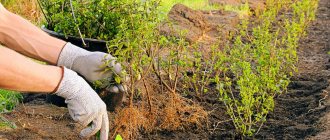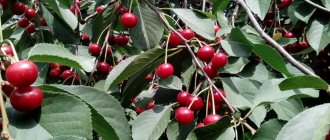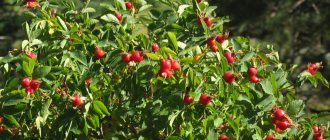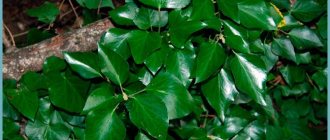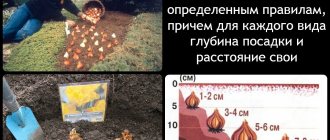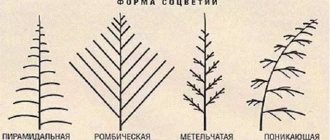Every day, when going outside, people notice many brilliant pictures of nature.
A charming landscape of majestic trees in a city park, living pictures of flowers underfoot, a green panorama of a suburban forest. All this was created by the Creator and has served all humanity for centuries. Many people, imitating the Great Artist, arrange their homes and plots in a unique way. Recently, fresh landscaping ideas have been used for this purpose. Creative summer residents create green decor to cover unattractive walls of utility buildings or fences. Moreover, they decorate living spaces with compositions of green plants. Unique living paintings are made from indoor plants, which are placed in special frames. They fit effectively into any interior of a house or apartment.
With the help of phyto-paintings, you can exotically decorate your apartment, give it a special coziness and enliven it with greenery.
How are living paintings created?
The essence of the new direction is to turn living plants into an art object, replacing canvas and paints with soil and flowers. A “living” landscape will always outperform a painted one, because it lives its own life, plays with colors and is constantly changing.
The canvas of the great artist Van Gogh shone with new colors when it was recreated on a huge wall using living plants
The basis for phyto-pictures are frames, metal mesh and plywood, which are fastened into one holding frame. It is filled with soil and planted in the cells of the plant so as to create a certain pattern.
A drip irrigation system is installed under the frame (if there is no time to water).
An ugly wooden fence, which is located “facing” north, can become a real art gallery if it is decorated with phytolandscapes of different sizes
Instead of a mesh, you can use special hanging containers that are fixed to a support. Plants planted in containers create compositions due to their texture, different sizes and colors, and at the same time they can be swapped if the design is not successful.
Material on methods for constructing vertical beds will also be useful:
The height and texture of the picture frame can be completely different. The main thing is that the frame has sufficient thickness to fill it with soil.
Some designers do not make frames in phyto-pictures at all. They create landscapes over the entire area of the house wall, fence, etc.
But in the case of using buildings as the basis for paintings, the walls will certainly be waterproofed so that “wet neighbors” do not destroy the structure of the material from which the wall is made.
First we prepare the material
The materials for oshibana are leaves, flowers, grass, seeds, fluff, moss - in a word, all plant diversity.
- First you need to collect them. Moreover, these natural gifts are collected both in summer and autumn. The more colorful they are, the more beautiful the picture will be. Some plants are best collected in the summer, others in the fall. This is a whole art, and the conversation about it is separate. It is important that the collected flowers, leaves and herbs are dry. Otherwise they will quickly deteriorate.
- Next, the collected leaves, flowers, stems, etc. must be further dried. This is done in several ways:
- in thick books between the leaves (putting tracing paper under each flower or stem);
- in a box with dry sand (if you need the flower to remain voluminous);
- using a warm (not hot!) iron;
- in the microwave;
- in glycerin. To do this, glycerin must be diluted in hot water (ratio 1:3), pour the diluted mixture into a deep container, lower the plants there vertically and leave for 2-3 days. Wait until they darken, remove and dry.
Still lifes from succulents
Most often, succulent plants act as components of a living design. They grow well on any type of soil, are not afraid of changes in humidity and can easily withstand periods of drought (if the owner forgets to water the composition on time).
To create a painting you will need:
- A ready-made or hand-made thick frame (the bottom bar is 4 cm thick).
- A sheet of plywood equal in size to the frame.
- Waterproofing material for plywood (film).
- Fine mesh metal mesh of the same size.
- Soil (forest clay soil mixed half with sand or fine expanded clay).
- Sphagnum moss (optional).
- Nails, hammer, construction stapler.
- Paint or varnish on wood.
- Succulent plants.
Create a picture like this:
- Cover the plywood with film so that the soil that comes into contact with it does not destroy the material. The film can even be food grade, wrapped in several layers around plywood.
- A mesh is installed between the frame slats and secured with nails or staples.
- On the back side of the frame, plywood is nailed with the insulated side inward.
- Nail fasteners to the plywood on which the picture will be held (at least 2).
- The frame is painted or varnished.
- While the frame is drying, prepare the plants: cut cuttings with a long tail to make it easier to insert into the mesh cells.
- The plants are laid out in the desired pattern right on the table to determine the composition of the picture.
- The frame is laid horizontally on the table and filled with soil through the mesh cells. Don't forget to compact it using a pencil.
- When the soil fills the frame flush with the mesh, spray the soil with water from a spray bottle.
- Lightly sprinkle the wet soil with dry soil or cover it with a layer of moss, which will prevent soil from spilling through the mesh, and begin planting.
- Large cuttings are planted first.
- Try to fill the frame as tightly as the mesh size allows, because succulents grow slowly.
- Leave the finished composition to take root for a month in a warm place where there is no direct sunlight.
- Check the soil moisture with a toothpick. Water only when there is no trace of soil left on the toothpick.
As soon as the plants begin to grow (and this can be seen from the young growths), feel free to hang your creation in a permanent place. The main thing is to avoid sunny places, otherwise the succulents will burn. For the winter, the paintings are put away in a heated room.
Cuttings of succulents must be prepared 1-2 days before planting in the picture, so that the cut site has time to dry out and does not rot.
Wooden frames do not like being close to wet soil, so their internal parts should be coated with varnish or antiseptic impregnation in advance
Sand or expanded clay added to the soil acts as a moisture accumulator, so even with infrequent watering, succulents continue to grow normally
About stabilized moss
Moss can be found in every corner of the Earth. In total there are about 10,000 species of this plant. However, not every variety is suitable for stabilization. During production, only certain breeds are used, which in their characteristics best correspond to the tasks assigned to them.
Read also: How to make stainless steel matte
Stabilization is a kind of conservation of natural moss. In simple terms, a living plant is soaked in a certain solution in order to stop its development and adapt it for decoration.
To produce a stabilized product, various types of moss are used:
Landscapes on walls and fences
If you want to create a living picture on the entire wall or completely hide an old fence under it, use a container decoration option (phytomodules). They are incredibly popular in Europe.
Phytowalls differ from vertical gardens in that designers carefully work out the pattern of plant placement in order to create some kind of visual image
The basis of phytowalls are also metal frames. They are attached to the base on which floral masterpieces will be created. In the southern climate, such walls are made from perennials that will not freeze over the winter, since severe frosts do not occur.
In the middle zone or northern regions, it is most convenient to create phytowalls from annuals. They provide no less bright colors and colors, but you don’t have to worry about wintering.
The metal frame is the main component of the phytowalls, since it is on it that the entire weight of the green painting is supported, gaining weight day by day
Landscaping rules
Let's look at the main points:
- The base is completely waterproofed.
- There should be 2-3 cm of space between the frame and the base for ventilation.
- The frame is attached to the wall using thick wooden blocks, laying them between the metal and the building.
- A pipe for drip irrigation is laid on the top of the frame. Water will have to be pumped into it.
- The container for plants can be jute fabric or a material like felt, which is not afraid of rotting and accumulates moisture well.
- Pockets made of the same material are sewn onto the jute canvas, in which the plants will live.
- You can not sew pockets, but quilt two large felt sheets with squares, and when planting, make cuts in the center of the squares and plant the plants there.
- Before planting on the wall, each plant is wrapped in felt or jute to keep the soil firm.
Professional gardeners for phytowalls use a drip irrigation system, laying a tube to each plant. But such complexity is needed for home phytowalls.
And outside, it is enough to organize drip irrigation from above, since the water will spread over the entire surface of the fabric and nourish each flower. Even if there is excess water, it will drain from below and will not damage the landscape.
An example of a drip irrigation system design can be found in the material:
Jute material has high strength and hygroscopicity, so all the moisture flowing from above will evenly disperse through the pores of the fabric and seep into the roots
Quilted two-layer felt also retains moisture well, so even adult plants with a small clod of soil or grown on hydrogel can be planted in it
In addition to pocket structures made of fabric, container-type plastic phytomodules can be purchased in specialized stores. For more information about these systems, watch the video.
Phytoideas by Patrick Blanc
The most famous phyto-artist was the Frenchman Patrick Blanc. He abandoned the container method of decorating the walls and came up with a hydroponic growing system. All the plants with which he decorates the walls live in felt slabs.
Recent Entries
Lilac perennials that are beautiful, compact and do not crowd out other plants Why when buying seedlings you should not take the sellers’ word for it and how to determine the age of the plant using 3 signs Tomato seedlings have turned purple or whitish: why the color has changed and how to save the plants
Using a drip irrigation system, they are fed with mineral solutions. Plants do not need soil to function normally. They take oxygen from the air, and food from water.
Patrick Blanc's phyto-paintings attract the eye already at the initial stage of seed germination, because everyone is interested in how the landscape gradually develops before our eyes
Patrick uses metal frames for the base. They are the connecting link between the walls and phyto-pictures. Plastic waterproof frames are screwed to the frames. They serve as a barrier to moisture getting on the walls and thereby protect the building from destruction.
On the outside of the frame, plates made of polyamide are fixed - a porous material that retains moisture well. It is in it that the flowers will grow.
The peculiarity of Blank's idea is that the plants are planted on the wall not as adults, but in the form of seeds. Approximately 30 seeds per square meter. Therefore, the phytolandscape also needs to be grown. But such plants are immediately adapted to vertical living conditions. They don't have to go through an adaptation period.
The finished painting can live on the wall for up to 10 years. Dying plants are replaced with new ones.
Features of composition and planting technology
The design of a living picture of plants must be individually drawn up in accordance with the concept of your home. As a rule, for such purposes, light greens are alternated with dark representatives and planted in the soil in the form of a pattern. It is better to place the most beautiful flowers with a variety of colors in the center of the picture. Plants with dark and fleshy greenery can be planted around them, thus creating a certain contrast in the landscape.
If the composition involves the use of decorative elements, then you need to carefully consider how to attach them. For example, small and medium-sized pebbles or shells can be glued to the frame with glue.
Note! After completing the composition and planting all its representatives, you need to give the living picture time to strengthen the flowers in the soil. To do this, lay it out on a flat surface in a well-lit room and let it sit for two weeks.
Flower arrangement
Moss graffiti - phytodrawing
Moss graffiti looks modern and stylish. They can be used to paint any vertical that is in the shadow. For example, on the front wall of a house, create its number or street name. Green letters will attract the attention of every passerby.
Moss patterns are very unpretentious. They do not require fertilizing, pruning, or drip watering. In damp places, mosses grow without any care
General instructions for application
To create such a design, you must first draw the desired design with a construction pencil and cover the outline with mounting tape so as not to go beyond the boundaries of the design.
For graffiti, it is better to take mosses that grow in your area, since they have a higher rate of survival than store-bought ones.
Next you need to create paint from moss:
- We go into the forest and cut off a cushion of beautiful moss (If there is no forest nearby, buy moss at the store).
- Mix unusual ingredients in a blender: brought moss + 2 cups of kefir + glass of beer + 2 teaspoons of sugar + 3 teaspoons of corn syrup (it can be replaced with any fruit syrup).
- The finished paint should be thick. If the solution flows from the brush rather than dripping, add more moss and whisk.
- Carefully apply the resulting magical mixture to the wall. If the wall is not too porous, first sand it with coarse sandpaper. Mosses take root well on porous surfaces.
- Cover the top with non-woven material, securing it outside the frame of the design with tape.
To ensure that the moss takes root well, spray the wall periodically.
What types of mosses are suitable for graffiti?
Each type of moss lives on a specific surface. For graffiti, you should select those types that cover the ground or corners of some abandoned concrete house. Mosses from trees do not take root on walls.
According to experts, moss species with a cushion-shaped shape - Racomitrium or Leucobryum - are suitable for phytodrawing. They grow even in northern regions and develop normally on rocky surfaces.
1. Small-fruited Racomitrium (Racomitrium microcarpum). 2. Racomitrium lanuginosum. 3. Leucobryum glaucum. 4. Dicranum scoparium Hedw
Mossy furniture
If you want to create not a painting, but an installation of an ancient garden, decorate old furniture with mosses.
Moss creates the impression of abandonment and antiquity in the garden, so it can be used to cover any surface - from sculptures to old shoes
To do this you need:
- Wash an old wooden chair.
- Cover it with wet strips of newspaper (like papier-mâché). Newspapers are wetted only with water.
- Spray from a spray bottle over the entire surface with PVA glue diluted with water.
- Wrap a chair with soft wire so that the mosses have something to hold on to.
- Collect pads of living moss in the forest (or better yet, sculpt a chair in the forest, where building material will be at hand).
- Clean the roots from the soil, sprinkle them with glue and press them to the surface of the chair.
- Place the moss tightly so that there are no lumbagoes.
- To secure the fixation, use toothpicks that can be stuck into each moss pad and hooked onto the wire. But stick it at an angle so that someone doesn't accidentally sit on the tip of the toothpick. After the moss has taken root, the clamps must be removed.
The finished moss masterpiece is sprinkled with water and placed in a shady place. You should moisten your stool every day for a month.
A type of moss that is well suited for furniture installation is sphagnum, which grows everywhere, has a high survival rate and a beautiful lush texture.
A piece of nature in the house: what is a green wall
The phytowall is a huge structure, similar to a puzzle, which consists of cells with plants - phytomodules. A fashionable green carpet has many advantages for lovers of indoor flowers:
- saves space;
- increases humidity, saturates the room with oxygen;
- does not require special care, as it is usually equipped with an automatic watering system;
- an excellent screen for zoning the space of a room;
- Gives you the feeling of summer all year round.
Creating a beautiful design
To make your living picture look attractive, use a beautiful frame. When making planting holes, get creative with interesting designs and configurations. You can arrange different species in alternating rows or arrange plants in a circle.
To improve your academic performance, you need to start studying an hour later than usual.
Andy Neil takes wonderful photographs of Colchester using light painting
A photo of dogs shows two extreme points of people's attitude towards the New Year
Use miniature succulents to create symmetrical designs. Interesting ideas on planting style and arrangement can be explored in specialized groups on the Internet.
“Panel with volumetric flowers”, master class with step-by-step photos
How often do we ask ourselves: what to give to our beloved mother, grandmother or friend for March 8 or her birthday? It's no secret that the best gift is the one made with your own hands, since a piece of spiritual warmth is invested in it. This master class will help solve not only this pressing issue, but will also bring maximum pleasure to you and help you please your loved ones with an exclusive and very unusual gift. Therefore, quickly arm yourself with all the necessary materials and start making your masterpiece in a good mood.
Necessary materials:
- office color paper A4 format (blue, orange, green);
- white office paper, A4 format;
- colored cardboard (green);
- glue;
- scissors.
Grid installation
To begin, you will adjust the mesh to the appropriate size. It should be equal to the size of the shelf plus the tabs that bend inward.
It is convenient to bend the mesh using a thin wooden board.
Bend the tabs at an angle of 90°, after cutting out the corners with wire cutters.
Be careful that the grille must fit exactly into the frame.
Attach the grille from the inside to the shelf using nails and a hammer.
What is a florarium with succulents
Few people know that succulents do not have to be grown in pots or flowerpots. As a container, you can use a regular round or rectangular aquarium or other glass vessels. Growing several types of flowers in glass containers is like a mini-garden.
A DIY florarium with small succulents will look great in any interior and design. You can also create all kinds of compositions from attractive succulents with your own hands and give them to your loved ones.
If you received an arrangement of painted succulents as a gift, read up on how to care for painted succulents to prolong their life.
Forms of florariums
A florarium is a mini-flower arrangement planted in a transparent container made of glass or plastic.
Reference! The fashion for succulent gardens dates back to the 18th century. It was then that they began to grow succulents in an aquarium, bottle, or vase.
In the modern world, florariums with flowers can be seen not only in apartments, but also in office spaces, since succulents in transparent vessels look impressive and create coziness in the room. Florariums can be open or closed. There are also tabletop, wall-mounted or hanging glass containers in which you can place a real mini garden of succulents.
Before you decorate your home with a florarium, find out what significance succulents have for your home. The energy of not all types of exotics is suitable for living space.
Hanging florariums
If desired, make a florarium with your own hands. First you need to decide on the glass container in which the mini-garden will be located.
Looking at the photos of florariums with succulents, you can come to the conclusion that a succulent garden can be set up in a round aquarium, in a glass jar, in a candy bowl, and even in a burnt-out light bulb.
Florarium in a jar and in a light bulb

